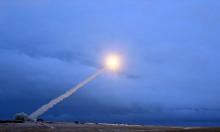America divides Arab countries into “bad” and “very bad”
Last week, Washington partly lifted the veil of secrecy in this delicate issue and named the countries to become, after Afghanistan, likely targets of the anti-terrorist coalition. There are three countries on the blacklist: Yemen, Somalia, and Sudan. Terrorists fromm Al-Qaeda are hiding on the territory of Somalia and Yemen, US Defence Secretary Donald Rumsfeld told journalists on Tuesday while visiting the headquarters of the US Armed Forces at the McDill air force base in Tampa, Florida. Mr. Rumsfeld mentioned that Somalia had been a country harbouring Al-Qaeda militants and has stayed such, according to the RIA Novosti news agency. As for Yemen, at least one Al-Qaeda foxhole has already been revealed there, according to Mr. Rumsfeld. Yemen’s officials categorically deny having anything to do with Al-Qaeda. Moreover, over 400 citizens, including foreigners, have been detained there in the wake of the September 11th attacks as a preventive measure. Those arrested were not only suspected members of underground terrorist organizations but even Afghan vets and opposition fundamentalists, specifically those from the Islamic Party of Reform. In late-September, the local authorities deported some 500 citizens from other Arab countries who illegally entered Yemen or stayed there (before 1996, some 14,000 Arab “Afghans” lived in Yemen).
Other preventive steps taken by Sana included a ban on issuing visas at airports, fearing unwanted persons entering the country using fake passports. Yemen has also launched an action to reregister all foreigners living on its territory. The authorities have started to close Islamic schools, where some 250,000 children study. In mid-September, an Islamic university was closed in Sana and its 300 foreign students are being sent to their homelands.
In the course of Yemeni President Ali Salekh’s visit to the USA, a bilateral agreement on cooperation in combating terrorism was signed. Under the agreement, the Americans shall render Yemen assistance in preparing and equipping special anti-terror forces headed by Gen. Ahmed Salekh, President Salekh’s brother. The USA is also supposed to provide means for the implementation of economic and social projects in the country’s areas believed to be strongholds of terrorism. Surprisingly, after such zeal for anti-terrorist activity, the country is announced to be the No. 2 target. Maybe, all those preventive measures have been just a bluff, and perspicacious guys from Washington managed to expose this insidious plan? But if those measures were real, the mistake in selecting the future target may cost dearly to the Americans.
It looks like the officials in the Pentagon were absolutely sure that Iraq would be the next target, but they failed to gather a quorum. Therefore, other targets were to be urgently brought out. According to earlier statements made by the US administration, Al-Qaeda bases are to be found in 20 countries. However, for some reason, only three countries were put on the list. How does the selection take place? How are the countries divided into “bad” and “very bad?”
One can assume that there were or even there are camps for training terrorists in those countries. But one doesn't need to be the smartest man in the world to realize that the coalition’s next target is going to be one of those countries or any other on the American blacklist.
It will be vital for those countries to urgently stop any activity of the organization (or its analog) on their territories. Anyway, this will hardly save them from pinpoint bombings.
Dmitri Litvinovich PRAVDA.Ru
Read the original in Russian: http://www.pravda.ru/main/2001/11/28/34312.html
Subscribe to Pravda.Ru Telegram channel, Facebook, RSS!




